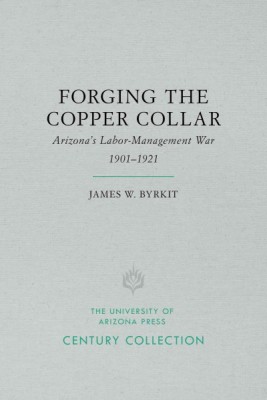| Forging the Copper Collar: Arizona's Labor-Management War of 1901-1921 Contributor(s): Byrkit, James W. (Author) |
|
 |
ISBN: 0816535183 ISBN-13: 9780816535187 Publisher: University of Arizona Press OUR PRICE: $42.75 Product Type: Paperback - Other Formats Published: October 2016 |
| Additional Information |
| BISAC Categories: - History | United States - State & Local - Southwest (az, Nm, Ok, Tx) - Political Science | Labor & Industrial Relations - History | United States - 20th Century |
| Series: Century Collection |
| Physical Information: 1.1" H x 5.9" W x 8.9" (1.35 lbs) 452 pages |
| Themes: - Chronological Period - 20th Century - Cultural Region - Southwest U.S. |
| Descriptions, Reviews, Etc. |
| Publisher Description: Bisbee, Arizona...July 12, 1917...6:30 a.m.... Just after dawn, two thousand armed vigilantes took to the streets of this remote Arizona mining town to round up members and sympathizers of the radical Industrial Workers of the World. Before the morning was over, nearly twelve hundred alleged Wobblies had been herded onto waiting boxcars. By day's end, they had been hauled off to New Mexico. While the Bisbee Deportation was the most notorious of many vigilante actions of its day, it was more than the climax of a labor-management war--it was the point at which Arizona donned the copper collar. That such an event could occur, James Byrkit contends, was not attributable so much to the marshaling of public sentiment against the I.W.W. as to the outright manipulation of the state's political and social climate by Eastern business interests. In Forging the Copper Collar, Byrkit paints a vivid picture of Arizona in the early part of this century. He demonstrates how isolated mining communities were no more than mercantilistic colonies controlled by Eastern power, and how that power wielded control over all the Arizona's affairs--holding back unionism, creating a self-serving tax structure, and summarily expelling dissidents. Because the years have obscured this incident and its background, the writing of Copper Collar involved extensive research and verification of facts. The result is a book that captures not only the turbulence of an era, but also the political heritage of a state. |